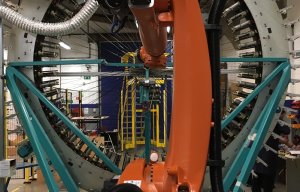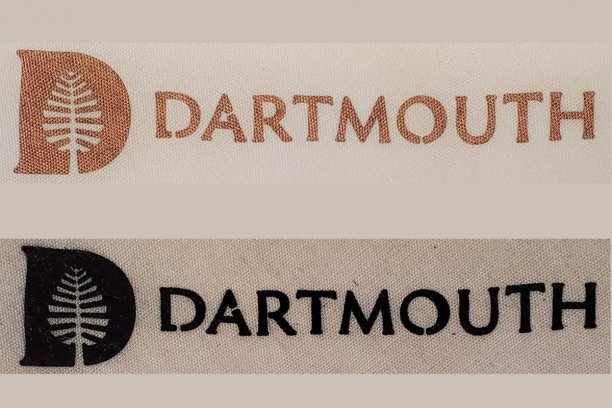
Robotic over-braiding facility launched
Combined filtration and sensing abilities could be valuable in biomedical settings.

23rd January 2023
Innovation in Textiles
|
Hanover, NH, USA
A durable copper-based coating developed by Dartmouth College researchers in Hanover, New Hampshire, USA can be precisely integrated into fabrics to create responsive and reusable materials such as protective equipment, environmental sensors and smart filters.
The coating responds to the presence of toxic gases in the air by converting them into less toxic substances that become trapped in the fabric, the team reports in the Journal of the American Chemical Society (JACS).
The findings hinge on a conductive metal-organic technology or framework developed in the laboratory of Katherine Mirica, an associate professor of chemistry at Dartmouth. First reported in JACS in 2017, the framework was initially a simple coating that could be layered onto cotton and polyester to create smart fabrics which the researchers named SOFT – self-organised framework on textiles. Their earlier paper demonstrated that SOFT smart fabrics could detect and capture toxic substances in the surrounding environment.
The researchers have now found that instead of the simple coating, they can precisely embed the framework into fabrics using a copper precursor that allows them to create specific patterns and more effectively fill in the tiny gaps and holes between threads.
The framework technology has effectively converted the toxin nitric oxide into nitrite and nitrate, and transformed the poisonous, flammable gas hydrogen sulphide into copper sulphide. It also withstands wear and tear, as well as standard washing.
“The versatility and durability of the new method allows the framework to be applied for specific uses and in more precise locations, such as a sensor on protective clothing, or as a filter in a particular environment,” Mirica said. “This new method of deposition means that the electronic textiles could potentially interface with a broader range of systems because they’re so robust. This paves the way for other applications for the framework’s combined filtration and sensing abilities that could be valuable in biomedical settings and environmental remediation.”
The technique could also eventually be a low-cost alternative to technologies that are currently cost prohibitive and limited in where they can be deployed, needing an energy source, or rare metals such as in catalytic converters in vehicles.
“Here we’re relying on an Earth-abundant matter to detoxify toxic chemicals, and we’re doing it without any input of outside energy, so we don’t need high temperature or electric current to achieve that function,” Mirica said.

Business intelligence for the fibre, textiles and apparel industries: technologies, innovations, markets, investments, trade policy, sourcing, strategy...
Find out more